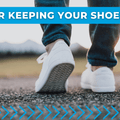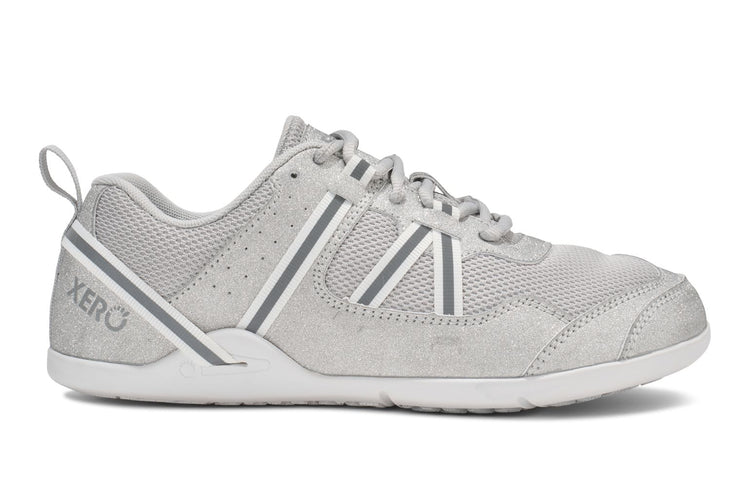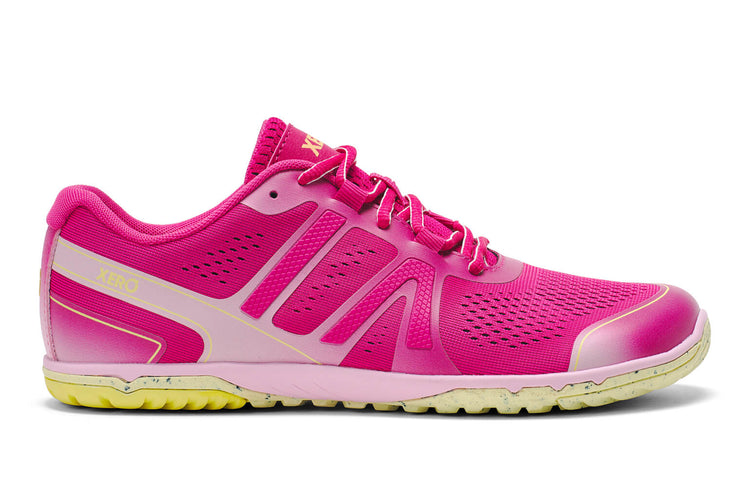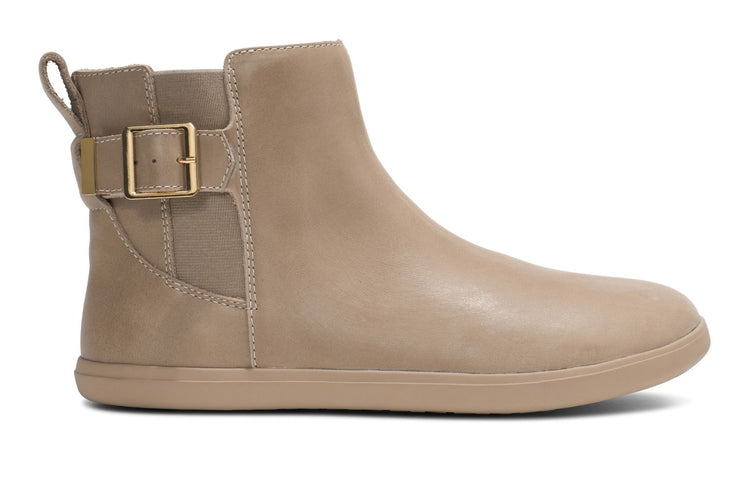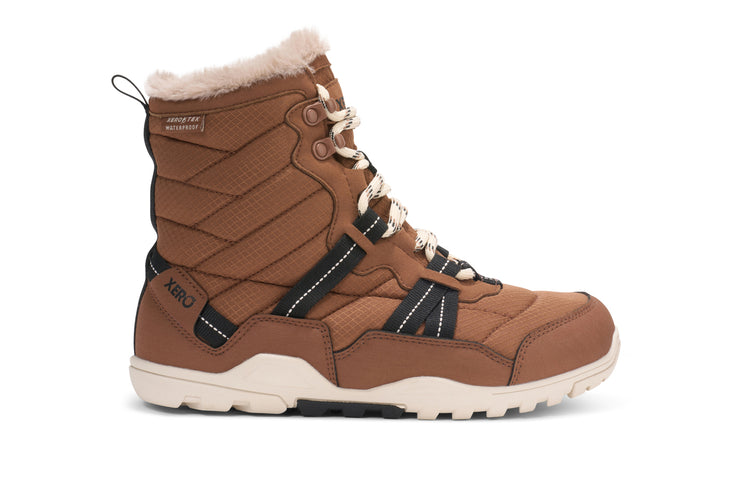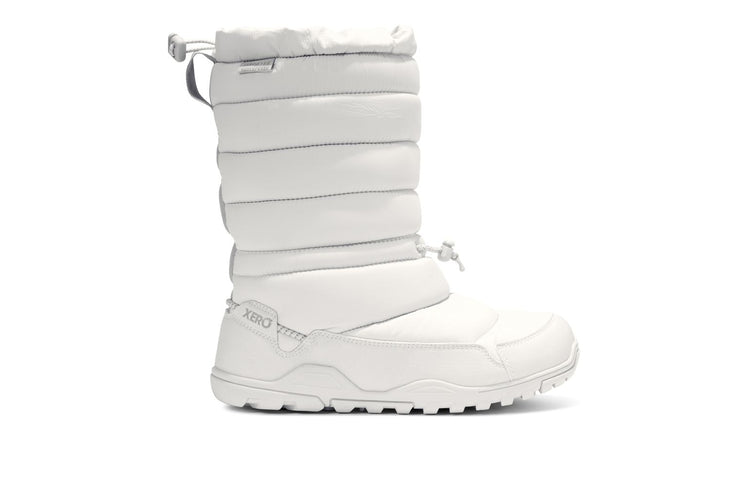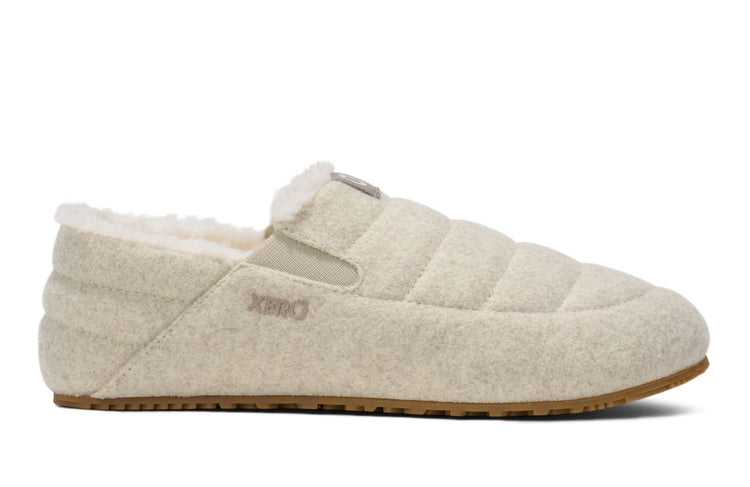“The Dream Shoe”: A Partnership with Xero Shoes & Born to Run 2 Authors
latest News
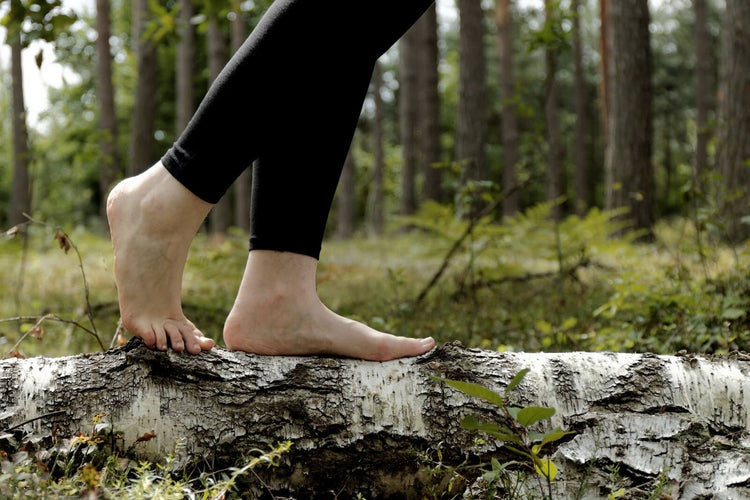
How To Walk Barefoot: Techniques & Health Benefits
Most of you will read the title and think, "Uh, I don't need instruction about how to walk because I have been doing it my whole life!" Others (hopefully) will think, "Finally, the answer to my burning question - have I been walking wrong this whole time?" Whichever group you are in, keep reading to learn about the surprising benefits of barefoot walking (or the benefits of zero drop/minimalist shoes), as well as instructions to get you started. What Is The Right Way To Walk? For those of you who are skeptical that there may be a better way to walk, let me ask you this: Do tribal women in Africa with water jugs balanced on their heads walk in the same way that Olympic race walkers do? Do either of those people walk in the same way that you do? The answer to both questions is obviously no. That's because walking isn't just walking. There are optimal ways to walk, just like there are optimal ways to throw a baseball, or do a ballet split leap. That doesn’t mean there’s only one way you walk under all circumstances. Your gait will change if you’re walking uphill or downhill, accelerating or decelerating, walking fast or walking slow, or walking on different surfaces. But there are fundamental principles that you’ll discover in this article which can make your walking more efficient, enjoyable, and simply better for your body. How Going Barefoot Can Help You While it’s possible to learn optimal walking form in shoes, it’s faster and easier to be in your bare feet to discover the best way to walk. That’s because: Most “normal” shoes get in the way of proper walking form. They squeeze your toes together, alter your posture with elevated heels, and are stiff enough to restrict your bones and joints from moving naturally. (more about footwear in a moment). When you’re barefoot, you get feedback from the ground which can help you find a natural, comfortable way to walk. In short: walking with proper form feels good, and improper form feels uncomfortable. Finally, walking barefoot can be fun. Especially if you have the courage to explore going barefoot in places where you’ve never felt the surface you’re walking on. One other advantage: By walking barefoot, you become your own best teacher about proper walking form. Listening to your body will help you discover your own secrets for walking efficiently, enjoyably, and easily. How Should My Foot Land When I Am Walking? Some Youtubers suggest we’re built to have our forefoot touch the ground first. And there are some who say that you’re supposed to land on your heel when you walk (barefoot or not). They say, “That’s why we have a fat pad under our heel.” Prior to the barefoot running boom and the publication of Born To Run in 2009, people rarely talked about different ways your foot can or should contact the ground. Now it’s practically dinner party conversation, where the barefoot gang looks down their noses in disgust at shoe-wearing heel-strikers, and shoe-wearers call the barefooters crazy hippies, and fights have broken out about whether landing on your forefoot is better or worse than landing on your midfoot or flat-footed. So, which is it? Well, the real answer is: Asking which part of my foot should touch the ground first is the wrong question ;-) What I mean is: Your footstrike changes based on whether you’re walking uphill, downhill, fast, slow, accelerating, decelerating, and what surface you’re on, and; Your footstrike will mostly take care of itself when you learn the most important aspect of barefoot walking, namely… Landing with your foot underneath your body (or close to that) rather than having it land too far out in front of your body, which is called “overstriding.” If you’ve explored barefoot running, you’ll recognize these ideas about walking are the same as for running. Where your foot lands in relation to your body, to your center of mass, is the most important thing. And the way you learn to have your foot land in the right place is all about using your glutes and hamstrings properly when you walk… and that’s what the instructions, below, will teach you to do. How Do I Train Myself To Walk Barefoot? If you want to learn the natural way to walk, follow these steps for learning how to walk barefoot properly (and more enjoyably!): Get Barefoot Start by taking off those shoes, or get as close as you can to having bare feet. Incredibly, even socks can get in the way of the feedback you need to learn proper walking form. You want to be able to fully articulate your foot and let your nerves feel the ground. If you have to wear shoes, avoid shoes that get in the way of natural movement, namely, cushioned shoes, shoes with elevated heels, shoes that squeeze your toes together, and shoes that are not super flexible (e.g. you can’t roll them into a ball). Instead, choose barefoot-inspired, minimalist shoes that are low to the ground, flexible and with a non-elevated “zero-drop” heel and a wider, foot-shaped toe box, like Xero Shoes. Walk with your glutes, not your hip flexors Your glutes and hamstrings are among the largest muscle groups in your body. They’re referred to as “prime movers.” But most people don’t use their prime movers. Instead, when most people walk, they swing their free leg out in front of them by using their hip flexor muscles, and push off with the toes of the standing leg so they can then pivot over the front leg. Try this technique instead: Lift your left foot about an inch off the ground. Through the next 4 steps, you want to leave that leg alone. Don’t swing it forward. Let it hang there, as much as possible, doing nothing. Now, imagine the motion of a roller skater or ice skater. When you skate, you push yourself forward by driving your standing leg backwards. When you skate, you drive your heel backwards, keeping it on the ground as long as possible. Doing this engages your glutes and hamstrings. That’s why skaters have great butts ;-) Next, do that skating move, driving your right heel backward. Remember, don’t swing your left leg forward. When you push your right heel back enough, and don’t use your left leg, at some point – and you won’t have to think about it – your left foot will plant itself on the ground so that you don’t fall on your face. Look at where your left foot is in relation to your body. If you’ve done this correctly, you’ll see that it’s basically underneath you, supporting you, as your right leg is dangling in the air, pretty much where your left leg was in step 1... Now that your weight has shifted to your left leg and your right leg can hang there, with your foot about an inch off the ground, simply repeat the steps above but with your left leg’s heel pushing back in a “skating” motion, and use your right leg just to catch you and keep you from falling. At first when you do this, you’ll be walking a bit like a robotic Frankenstein… sort of lunge-catch-stop-lunge-catch-stop. Keep doing this until you get the feeling of using your glutes as you drive your heel back, relaxing the “swinging leg” and only using it to catch you at the last moment, landing with your foot under your body. Then, smooth it out like this: Don’t push your heel back quite so far (but still use your glutes) When your front foot lands, immediately start driving that heel back See how much you can relax As you smooth it out, you may notice that as you walk it can feel like you’re slightly falling forward. This is fine. In fact, it’s probably not true. It’s probably that you were previously walking with your hips slightly behind your feet and, possibly, with your shoulders behind your hips (if someone were looking at you from the side, that is). When you walk properly, it can feel odd simply because it’s not what you’re used to. That “slightly falling” feeling means you’re using less energy. And it usually also means that your feet are under your hips and your hips are under your shoulders. As you experiment this, you’ll probably find other parts of your body relaxing and doing less. Listen To Your Body & Stick With It Again, don’t worry about which part of your foot touches the ground first. Gently rolling over your heel is fine. Landing forefoot is fine. Landing flat-footed is fine. You’ll do all of those as you explore different surfaces, different inclinations, and different speeds. For example, on hardwood floors I tend to land flat-footed or on my forefoot. On carpeting I roll over my heel. Walking uphill, I always land on the ball of my foot. Walking downhill I always roll over my heel (because the ball of my foot would land in front of my body which would be like putting on the brakes). Because you are able to feel the ground now, your feet will provide feedback about what is and isn't working. This walking technique can help support your lower back, knees, hips, and your ankles. Your foot strike will take care of itself, and it will feel like you are walking on top of your feet rather than behind them. Remember, this motion may feel robotic at first. As you practice and relax, it will become a smooth, comfortable, and efficient experience. Are Minimalist Shoes As Good As Walking Barefoot? Going completely barefoot isn't for everyone and isn't right for every occasion. The good news is that you can walk in minimalist (or barefoot) shoes instead. That's why we created Xero Shoes - so you can get all the benefits of being barefoot while still protecting your feet. Xero Shoes are designed with a thin, flexible sole and roomy toe box so your feet can move naturally. This allows you to strengthen your foot muscles and safely get feedback from your environment similar to what you get in bare feet. NOTE: Not all minimalist shoes are, well, minimalist There are many footwear brands that advertise their shoes as “barefoot” or “minimalist.” And there are brands that advertise that they’re “zero-drop,” meaning that the heel isn’t elevated higher than the ball of the foot. People often use minimalist and zero drop shoes interchangeably, which isn’t accurate, since you can have a zero-drop shoe with a stiff, or highly cushioned sole. According do Dr. Irene Davis, the characteristics of a truly “barefoot shoe” are: A wider, foot-shaped toe box No arch support (more about that in a moment) Little or no cushioning (more about this, too, in a moment) A flexible sole to allow for proper foot motion A thin sole to provide proper feedback about what you’re stepping on or in Light weight “Zero-drop” on a non-elevated heel According to Dr. Davis, shoes that don’t have ALL of those characteristics are “partial-minimalist shoes.” And her research shows that these types of shoes are the worst shoes to wear. That’s because, typically these shoes have cushioning that inhibits the feedback you need to naturally adopt a more ideal gait, and any heel lift will do something similar. Xero Shoes, according to Dr. Davis, checks all the “barefoot boxes.” Plus, we make our soles more durable and back them with a 5,000 mile sole warranty. In addition to our collection of minimalist shoes, we also make minimalist sandals and boots that you can wear anywhere from the office to the trail. Can I Walk Barefoot On Hard Surfaces? In a word: Yes Humans evolved in places with packed mud that’s as hard as concrete (and with rocks and twigs and pokey things that you would never want to step on). Your muscles, ligaments, and tendons are natural springs and shock absorbers. Better than any man-made cushioning material. And when you land with your foot underneath your body, you can engage your arch (regardless of whether you have flat feet or high arches), to give you a strong foundation. By following our technique, your feet will naturally learn how to handle hard surfaces just fine. However, there is, of course, a time and place for minimalist shoes. Wearing minimalist shoes can help protect your feet from: High temperatures Sharp objects Potential fungal infections Places that require footwear Have FUN! One of the best things about walking barefoot is how enjoyable it can be. Over time you may discover that surfaces you originally found unpleasant to walk on become your favorite natural foot massagers. You’ll probably find ways to make your movement more efficient and feel parts of your body relax that you never knew were tense. Learning a new movement pattern takes a bit of time to become habitual, and it’s a different amount of time for each person. So, while you’re adjusting, use fun as your guide. If it feels like work, stop. Rest. Then start again later. Remember that your brain integrates new things when you’re resting, not by working harder. So, use fun as your guide. And, if you want to try Xero Shoes, start shopping here, or take our Shoe Finder Quiz and get recommendations for your new favorite footwear. The information in this post does not take the place of medical advice. Only your doctor can provide advice, diagnosis, and treatment. Always consult a qualified health provider if you have questions about your health.
Why barefoot sandals and not minimalist shoes?
New to "barefoot shoes"? Trying to decide between the minimalist shoe options?I know the feeling. Back in 2009, when I knew I wanted the benefits of being barefoot, but with a bit of protection (and something that would let me get into restaurants), I tried everything.I LOVE our new minimalist shoes... they're built off of our sandal base so they're as close to barefoot as any shoe I've ever tried.That said, if you want a "more barefoot" experience, you'll want to try a sandal at some time. Here's why. Better Bare Foot Feel -- You want to feel the ground as much as possible, without having to worry about what you're stepping on. With our FeelTrue® outsoles, you get the closest thing to a barefoot feel, but with the protection you want. BTW, don't be fooled by some shoe companies that claim to have a 4mm or 6mm outsole. If the sole is stiffer, it'll reduce the ground-feel. And if they add any padding on the inside of the shoe, that contributes to the thickness. Natural Movement-- You want to let your feet move and your toes flex and wiggle without anything getting in the way. With the dual-direction chevron treads and the flexibility of our FeelTrue® rubber, our outsoles let you grip the ground. And with nothing restricting the top of your foot, your toes can lift and splay as much as you want. Anti-bacterial/Anti-Odor -- The air circulates around your foot, instead of having your feet wrapped up. Easier Fit -- Our sandals will fit your foot, no matter what shape it is -- curved, straight, narrow, wide. And you can trim some of them with a pair of kitchen scissors for a perfect fit. Lightweight -- At 3.4 ounces for a men's size 9 (the 4mm DIY kit), you'll have a hard time finding anything that feels like, well, you're almost barefoot. We've had customers forget they were wearing their Xero Shoes and go to bed with them still on! Multi-purpose -- People all around the world use Xero Shoes for everything from walking, to hiking, to camping, to yoga, to stand-up paddleboarding, to sea kayaking, to sky-diving, to running, to tackling 100-mile ultra-marathons! Convenient -- Xeros roll or fold and fit in small spaces. Stick 'em in your pocket so you have them handy for a hike or to get through the airport faster. Personal Style -- With 5 different sole colors, dozens of lacing styles, and even more decorative add-ons, you can have sandals that are high-performance, ultra-minimalist or fashion-forward and ready for a night on the town. In fact, those could be the same pair! Inexpensive -- I don't get how minimalist shoes and sandals can be $150-$200! Ours are under $80. Xero Shoes' sandals are a fraction of that price. You could get 5 pairs (one in each color! ;-) of our DIY kits for the price of some minimal running shoes. Long-Lasting -- People often ask how long Xero Shoes will last. True to our tire-sandal heritage, Xero Shoes come with a 5,000 mile sole warranty. Compare that to running shoes that you're supposed to replace every 300-500 miles!
Is there a best way to run?
The barefoot running boom has heated up a debate about the best way to run.Barefoot? Shoes? Barefoot shoes?Midfoot strike, heel strike, forefoot strike?In today's New York Times Online, Gina Kolata (whose writing and name I adore) goes after this question.Really, you can stop reading after the first sentence of the 2nd paragraph... and since that's the most important sentence, I'll just quote it here:Most of the scientific research is just inadequate to answer these questionsThe reasons that the research is inadequate are two-fold: Not enough research to explore the various aspects of the question Poorly designed research I can't say much about #1 other than to hope that more research is done. But if more research is done poorly, then what's the point.So what makes some of the running research, especially the studies that examine barefoot running, so poor? A number of factors: Bad cohort (the people in the study). Many of the studies solicit "barefoot runners" who've never actually run with bare feet. They may have spent some time in Vibram Fivefingers or, worse, in Nike Free... but wearing those is not the same as being barefoot (as many readers of this blog can attest). Many of the studies have too few runners. Many of the studies have runners that are, say, between the ages of 18-22 and on the college cross-country team (they're not typical runners). And if the number of runners in the test is small enough, it may be hard to extrapolate from their results. Missing factors. Many of the studies will look at one aspect of gait and ignore many others, and then try to conclude something about running mechanics. Rodger Kram's recent study on cushioning, for example, doesn't look at foot placement (overstriding or not), doesn't consider weight (which can effect the value of cushioning), type of cushioning, etc. I'm not saying that it's even possible to design a study that accounts for all these factors, but when you isolate things too much, it's hard to draw a useful conclusion... though everyone around you will draw it and then fight to the death defending or attacking it. Arbitrary variables. Many studies are done with runners on treadmills running at a fixed pace. The obvious question: is running on a treadmill identical to running on a track? Not in my experience. Also, is, say, 5 minute/mile pace my usual pace? We know that if you increase your cadence without increasing your speed, you can reduce force on your body and decrease the amount of time you spend on the ground... so by controlling one variable, you could be affecting the results of the study. Suffice it to say, I'm always glad when the media talk about running, and barefoot running in particular. But I find it unsatisfying when they merely regurgitate the "results" of a study without telling the reader whether the study is worth considering in the first place.Then there's the straw man problem, which is when you make up a person (complete with opinions) and then argue with that fictional person. There's a lot of that going on. Many barefoot writers (including myself, Pete Larson, Bill Katovsky, Mark Cucuzzella) have noticed that individual differences may be more important than "one right way" to do things, and that it's hard to get useful data by looking at genetic freaks (like Olympians). Yet the media loves to present these studies, and studies of studies, as if there's no reasonable thinking on either side of the fence. Not true.Again, as the article said up top: Most of the scientific research is just inadequate to answer these questions. Let's hope that changes.The content of this post does not constitute and is not intended to be a substitute for professional medical advice, diagnosis or treatment. Always seek the advice of a physician or other qualified health provider with any questions or concerns you may have about your health or a medical condition.
Barefoot Running - The Movie!
Our friends Michael Sandler and Jessica Lee have just released an incredibly ambitious project:Barefoot Running - The MovieShot in Hawaii, the footage is STUNNING (it'll make you want to run, run barefoot, run barefoot in Hawaii, or just move to Hawaii). I'm telling you, some of the shots in this movie make it feel like you ARE running around Hawaii, which as the Fall descends on Colorado, is quite a pleasant feeling.And it's practically everything Michael and Jessie know, and have been teaching, about barefoot running for the last 3+ years. I say "practically" because the section of footwear is notoriously lacking in a mention of us ;-) (or of huaraches, in general).I asked Michael about this. He said, "When we got to that section of the video, it was just me and the director and one camera... and we didn't have any of our sample footwear -- including Xero Shoes -- on the island. And we had just a few hours to get that section done!"Apology accepted ;-)He did, though, let me know that huaraches are featured in their upcoming book, Barefoot Walking (due out early 2013).BTW, if you don't know, Michael and Jessie were my introduction to running without shoes... and Michael's comment that if I built a website for what was at the time a sandal-making hobby he would include us in his upcoming book... well, that was the beginning of Xero Shoes.Congrats on an impressive and heartfelt project, M & J... and thanks for inspiring what has become the most satisfying business I can imagine.
"Barefoot Sandal" Start-up Hires Former Crocs Exec
“Barefoot Sandal” Start-up Xero Shoes Brings On Former Crocs Exec and Avia Co-founderBoulder, CO, October 2, 2012 – Dennis Driscoll, a 35-year footwear industry veteran who co-founded Avia Footwear and most recently worked as Global Design Director for Crocs, has joined Boulder-based barefoot running shoe start-up, Feel The World, Inc., the makers of Xero Shoes • Original Barefootware.Driscoll's roll at the bestselling "barefoot sandal" manufacturer is Chief Development Officer. Asked what attracted him to the product, he answers, "Xero Shoes are genuine, legitimate. We don't have to create ways to differentiate our product, because it is actually different."Regarding the company, and its co-founders, Steven Sashen and wife Lena Phoenix, Driscoll adds, "They are a smart team who've already proven themselves and their business. I like that my experience with all aspects of the footwear business can have a big impact here."Sashen and Phoenix reciprocate the admiration. "It’s highly unusual for someone of Dennis’s skills and caliber to work for a company at our stage. We're thrilled to have Dennis help take our product, and our company, to the levels we know they can attain."Dennis Driscoll started in the footwear business in 1978 with Osaga Athletic Footwear as the Director of Product Development. In 1981 he co-founded Avia Athletic Footwear as the VP of Product. Ten years later Dennis joined Wilson Sporting Goods as the Global Business Unit Director of Footwear. After a 7-year stint at Converse in senior product roles, Driscoll took a position at Doc Martens Footwear and moved to London as the Global Director of Product. In 2010, he went to work for Crocs as Global Design Director where he had a fourteen member design team in the US office and design centers in Padova, Italy and Tokyo, JapanABOUT:Feel The World, Inc. of Boulder, CO, manufactures Xero Shoes®, a high-tech upgrade on the traditional huaraches running sandal of the Tarahumara Indians of Mexico. Durable, stylish and affordable — Xero Shoes supply the fun and benefits of being barefoot, but with a layer of protection. Feel The World, Inc. launched in December 2009. To date, over 25,000 customers, ages 1 to 91, in more than 73 countries wear Xero Shoes for walking, hiking, yoga and gym-going, Crossfit, kayaking, jogging, and even running hundred-mile ultra marathons.
Xero Shoes Barefoot Sandals in COLOR!
Houston, we have color! I am extremely happy and proud to announce that you can now get Xero Shoes in 4 WAY COOL colors. And to celebrate, you can also save 20% if you order by October 2nd! In addition to our Coal Black, you can now get Mocha Earth, Electric Mint, Boulder Sky, and Hot Salmon. Combine those with our different lace colors... Well, here are a few combinations that you'll see around our office: Lena in her Mocha Earth with matching brown laces and a bunch of Brass Beads. Our office ultra-runner (and customer service manager), Bill, in Electric Mint with Purple laces (he puts 80-100 miles a week on these!) Steven, taking inspiration from an 8 year old customer who was the first one to wear non-matching laces, in Boulder Sky with White laces and a Hand Pendant (on the left) and Hot Salmon with Red laces (right). These new colors come in both Connect 4mm and Contact 6mm styles. And you can get them as kits or custom-made. Click here to order your Xero Shoes Colored Barefoot Sandals
Dan Lieberman on Running Form
Harvard's Daniel Lieberman is one of the stars in Chris McDougall's book, Born To Run. In the book, Chris describes Dr. Lieberman's anthropological theory that humans ability to run long distances (while maintaining their body temperature) allowed us to chase down animals that, for short distances, are much faster than we are. He also details Lieberman's research into running mechanics and running form, including the famous study that demonstrated how barefoot running puts less force through your joints and can be better/safer for you.Well, thanks to Pete Larson at www.runblogger.com (who turned me onto the following video), and thanks to Tuck at http://yelling-stop.blogspot.com/ (from whom Pete found it), I'm happy to share this video of Dan sharing his top 5 tips for better running.All I would add (and I'm about to release something that describes this) is that "Don't overdo it" isn't a useful message, because the only way you know if you've over-done it, is when you've done too much and it's over! ;-)In other words, better to come up with a plan for what you ARE going to do, rather than make an admonition about what you shouldn't do, since us humans are as bad at following "don't do this" rules as we may be as good at chasing down an antelope.
See, Barefoot Running is NOT Bad for You
The media is an interesting thing. One day, they love you, the next day they hate you. As long as there's controversy, they're interested... ish. The last time barefoot running made all the news it was when the University of Colorado study (done right up the hill from me) apparently showed that barefoot running was less efficient than running in shoes (see my analysis of that study here). In fact, when that study got published, the media went crazy, practically insisting that this was the death knell for those of us who run unshod. So, I'm not sure what it means that they've basically ignored a new study from Northumbria University that shows the exact opposite! Why are there no crazed headlines about how running without shoes really IS the greatest thing since bread, the slicer, and the sliced bread that comes from intelligently combining the two? Who knows. Who cares. More importantly, check out the info about the study here at ScienceDaily.com In short, if you want the synopsis: Runners used 6% more energy when they wore shoes. Here's the line I like: The results suggest that, by ditching their trainers, athletes new to barefoot running adopt a running style similar to experienced barefoot runners and enjoy an immediate and likely beneficial increase in running economy. Works for me (in fact it DID work for me!)
Vibrating insoles, bare feet, and balance
The Wall Street Journal online published an article describing the research of James Collins from Harvard. James wondered why people get less steady on their feet as they get older.His conclusion: They get less feedback from the ground and lose the ability to balance.So far so good.His solution: An insole that provides random vibration to stimulate the nerves in the feet.Can anyone here think of another way of doing the same thing, but without all the electronic bells and whistles? Anyone? Beuler? Beuler?If you said, "Take off your shoes!" you win any prize on the second row!If you said "Take off your shoes! And if you don't want to step on unpleasant things, wear Xero Shoes!" you get a prize from the TOP row! ;-)If you think about this, it sheds light on another bit of research on balance and the elderly: Studies have shown that Tai Chi can help elderly people regain their balance. But it's probably not the Tai Chi that's causing the effect (BTW, I have nothing against Tai Chi... I did it and taught it for years). It's the time spent barefoot, FEELING the ground.I hope that someone does a study with Xero Shoes and balance sometime. I'd place a bet on the outcome.The content of this post does not constitute and is not intended to be a substitute for professional medical advice, diagnosis or treatment. Always seek the advice of a physician or other qualified health provider with any questions or concerns you may have about your health or a medical condition.
Barefoot Running... The Movie!
I know many of you are eagerly waiting for the Born To Run movie (I am, too).Well, until that's out at your local gajillion-plex, check out this trailer of the new barefoot running movie by Michael Sandler and Jessie Lee, authors of Barefoot Running.I'm forever grateful to Michael and Jessie... when I decided to try running barefoot as a way to deal with my persistent running injuries, I was fortunate enough that they were teaching a workshop that very weekend, right in my backyard (metaphorically speaking... it was 3 miles away).Even more, after my first barefoot run, when I said to Michael, "Well, that was interesting, but I'm a sprinter, not a long, slow distance guy," he encouraged me to try it a few more times and, for some reason, I did.Then, Jessie, being a former sprinter herself, added a whole other level of fun when we would take off across some field, leaving the LSD runners in the dust ;-)Oh, and it was Michael saying, "If you had a website for these sandals you're making, I'd put you in our new book," that was the beginning of Xero Shoes!If you watch this trailer and don't want to book a ticket for the workshop where Michael and Jessie take you to all of these amazing locations, then there's something wrong with you (or you already live in Hawaii).I've seen clips from the entire movie and it's really something special. Enjoy.
How to think like a shoe company
You know the saying "when all you have is a hammer, everything looks like a nail"?Well, it's true for shoe companies, too. When all you have is padding and motion-control, everything looks like it pronates and lands too hard!Check out this video about the "secret" Adidas development center. Especially watch at the 2:10 mark where the "best people in the world" analyze Ben's sprinting gait and conclude:a) That he pronates and heel-strikes (NOTE: He over pronates BECAUSE he heel-strikes since, when you land on your heel, the ankle muscles can't can hold the foot/ankle/lower leg in place).b) The solution: Making a shoe with padding and motion control!Uh...First of all, if you heel strike when you sprint, you are not sprinting! Sprinters do not heel strike. And when you land on your forefoot or midfoot, the entire musculature of the lower leg, ankle, and foot, can be "pre-loaded" and engage when you land.The cure for Ben is to STOP HEEL STRIKING, not get a shoe that lets him continue to run incorrectly. Duh.My next comment falls into the "maybe it's just me" category: Notice how large, spacious and expensive this place is. Ben mentions that Adidas does over a BILLION euros in sales.Look, I'm the last guy to deny any company the right to make money, and I'd love to have a billion dollar company.But am I the only one who sees a direct connection between a massive, pricey research lab and shoes that cost $150-200, and "hi-tech" shirts that cost $100+. This is like a thought I had at the Outdoor Retailer trade show, where some of the bigger companies have booths that easily cost over $1,000,000, "Oh, now I know why they charge so much for their products! They need to support the booth."Honestly, I find it unlikely that the "amazing" research they're doing actually pays for itself. I think it makes them feel good about themselves, and makes naive reporters think, "Oh, wow, they're doing something really special here."I don't doubt for a second that they could drop the price of their shoes to something more reasonable, not waste money on "research" that's iffy at best, and still make the same profit.Again, maybe that's just me.The content of this post does not constitute and is not intended to be a substitute for professional medical advice, diagnosis or treatment. Always seek the advice of a physician or other qualified health provider with any questions or concerns you may have about your health or a medical condition.
Run in Peace, Micah True
There's no way to adequately thank one of the great inspirations in the running world, Micah True, also known as Caballo Blanco ("White Horse"), who was found dead just hours ago. Micah, arguably the "star" of Christopher McDougall's best seller, Born To Run, went out for a run on Tuesday and did not return. There's no news at this moment about a cause of death.As Micah would often say in signing off, "Run Free!"Run In Peace, Micah.



